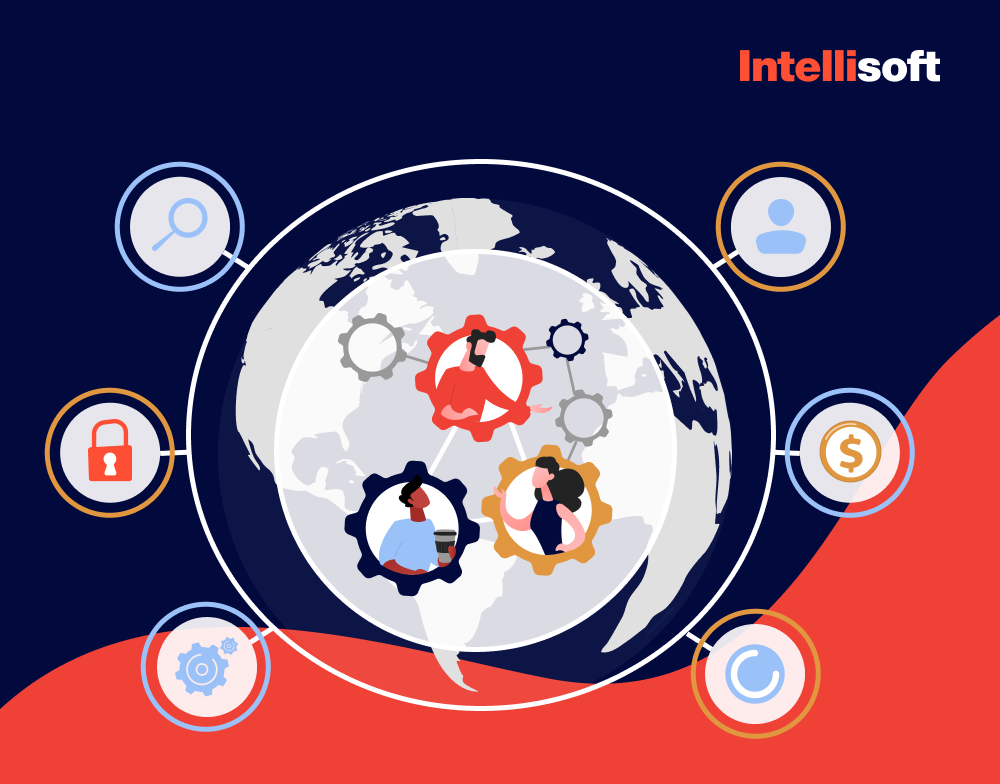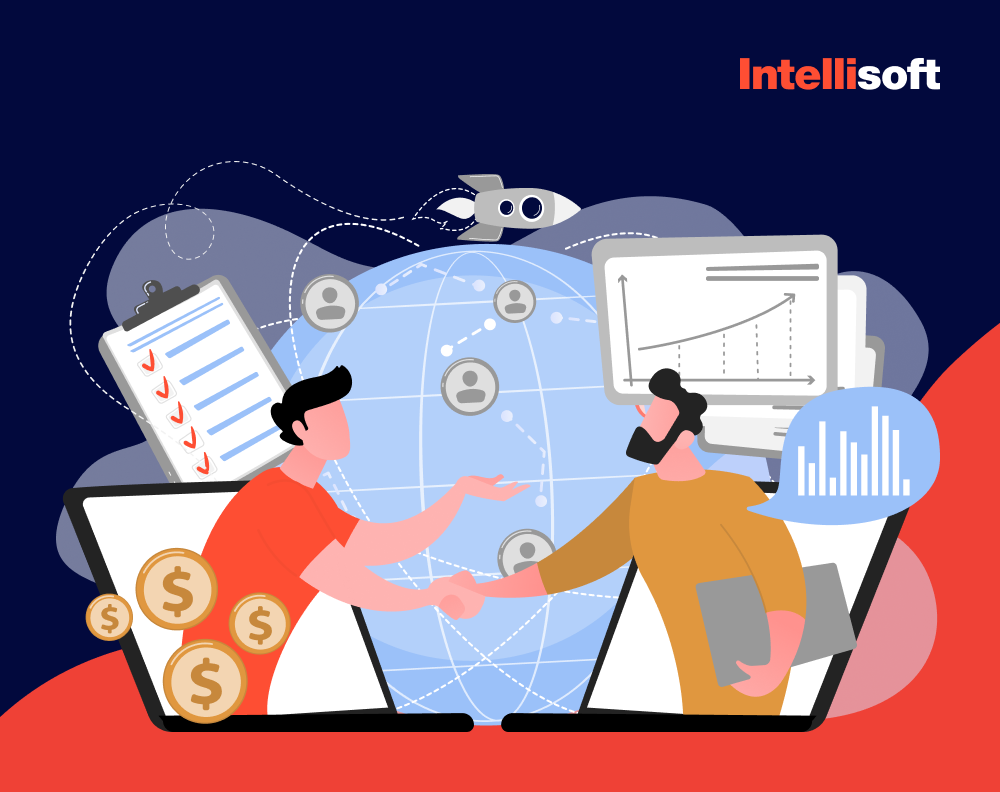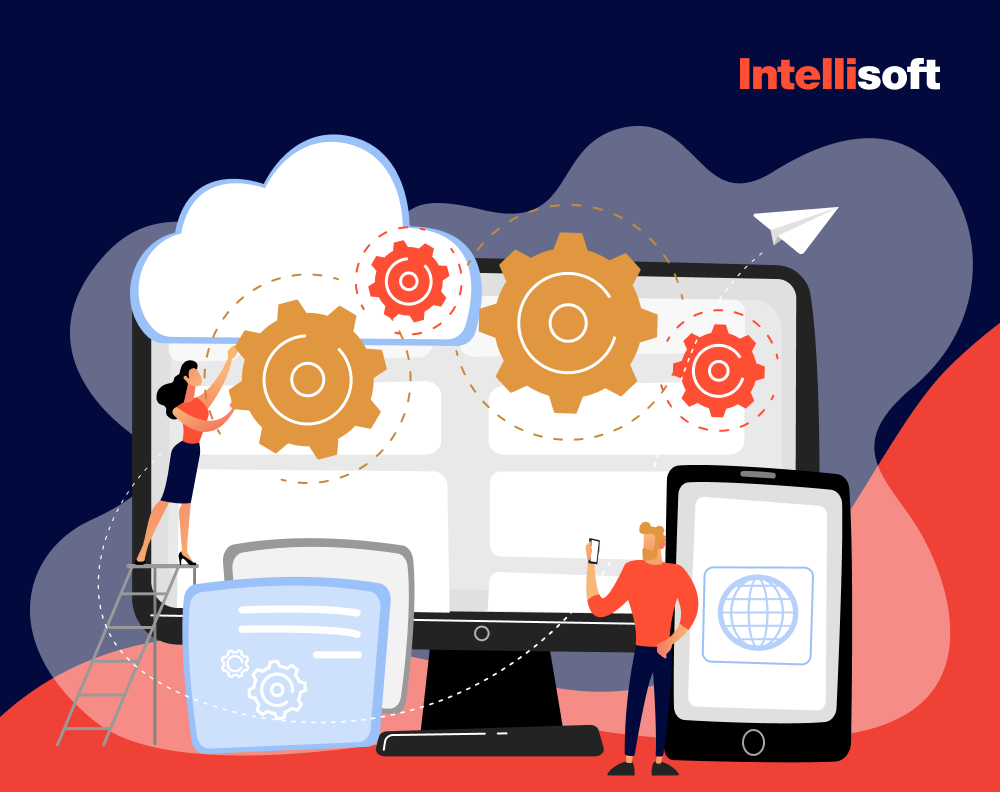The terms outsourcing vs offshoring might seem like two sides of the same coin, but they hold distinct differences that are crucial for any business strategy. Both aim to facilitate operations and make the most of a company’s resources, yet they take different routes to achieve these goals.
Offshoring means taking a part of your business operations to another country. Imagine a tech company opening a software development hub in India or a manufacturer starting a factory in Mexico. This relocation strategy is what we call offshoring. In contrast, outsourcing involves bringing in external expertise to handle certain tasks within the company. For example, instead of hiring a full-time marketing team, a company might contract a specialized marketing agency—this is outsourcing at work.
Our deep dive into offshoring vs outsourcing difference across various economies will highlight the unique benefits and potential drawbacks of each approach. By examining real-world offshoring vs outsourcing examples, we’ll uncover when and why a business might choose one strategy over the other. Get ready for a clearer understanding of how these practices differ and what they could mean for your business.
Table of Contents
What Is Outsourcing?
Outsourcing is a common business practice that involves contracting with an external individual or group to handle specific job functions. For instance, companies often outsource tasks like marketing and accounting, and even roles such as cleaning and maintenance can be outsourced. This practice focuses on assigning non-core activities to outside experts, contrasting with offshoring, where key business functions might be relocated overseas.
Before we delve into the differences between outsourcing vs offshoring, let’s dive into the primary advantages of outsourcing.
Benefits of Outsourcing
Outsourcing offers several key benefits for companies, including significant reductions in financial and organizational pressures. By outsourcing specific tasks, companies can access a larger pool of workers and expertise than they might otherwise have. Some of the top advantages of outsourcing include:
- Cost savings on labor and resources. Instead of hiring full-time employees and bearing the costs of benefits like healthcare and vacations, companies can opt to contract out tasks, effectively reducing expenses. Outsourcing can also lead to cost savings on facilities, equipment, and expensive technology.
- Access to specialized talent. Many businesses may not have the financial capacity to hire full-time specialist teams such as IT personnel. By outsourcing these tasks, they can still benefit from the expertise of highly skilled professionals without the burden of full-time salaries. This approach applies not only to IT but also to specialized skills such as software development.
- Alleviation of employee pressure. Outsourcing jobs like quality assurance allows company employees to focus their efforts on other tasks, increasing overall productivity. This approach also eases the pressure on employees, enabling them to concentrate on excelling in their primary roles rather than being stretched thin across multiple responsibilities.
Disadvantages of Outsourcing
Outsourcing comes with several drawbacks that should be considered. Here are the most significant disadvantages:
- Reduced control over products and services. When you rely on external consultants, you entrust them with the responsibility of completing tasks according to their expertise. However, they may not always approach the work in the same manner as you would, resulting in a loss of control.
- Limited collaboration opportunities. Internal collaboration among employees often fosters the exchange of ideas and insights. However, this potential for collaboration and knowledge-sharing diminishes when tasks are outsourced to third parties.
- Heightened risk of data loss. Engaging external consultants exposes the company to the risk of data breaches. Despite non-disclosure agreements, there remains a level of vulnerability to the theft of trade secrets, proprietary information, and sensitive data.
What Services Can Be Outsourced?
IT outsourcing transforms the way businesses handle their technology needs by entrusting specific or all IT functions to specialized external firms.

App Development
This involves outsourcing crucial services, including web and mobile app creation, custom software development, and software testing and maintenance. This approach accelerates development cycles and enhances software quality.
Infrastructure Management
Outsourcing the management of servers, networks, storage, and cloud systems can keep your critical IT backbone robust and responsive. Services range from data center management to network monitoring and system administration, ensuring your infrastructure supports your business without interruption.
IT Help Desk and Technical Support
External providers can offer comprehensive IT support, from help desk operations to remote troubleshooting. This includes resolving technical issues, installing software, training users, and ensuring smooth and continuous operation of business processes.
Data Management and Analytics
Enhance decision-making and operational efficiency by outsourcing data-related tasks such as data entry, cleansing, database management, and analytics. This strategic approach helps you harness the true potential of your data assets.
Cybersecurity Services
Safeguard your digital assets by outsourcing cybersecurity tasks. From conducting vulnerability assessments to continuous security monitoring, incident response, and expert consulting, these services protect against evolving threats.
QA and Testing
Ensure the highest standards of quality by outsourcing quality assurance and testing services. This covers everything from functional and performance testing to usability assessments and automated tests, which are crucial for maintaining top-notch software performance.
IT Consulting and Project Management
Leverage external expertise in IT consulting and project management for strategic guidance and meticulous project oversight. This ensures projects are executed flawlessly and aligned with your overarching business goals.
Next, let’s delve into the characteristics of the offshoring model and explore the key distinctions between outsourcing vs offshoring.
What Is Offshoring?
Offshoring involves either relocating employees overseas or hiring new employees in an overseas location. Companies may choose to offshore to access a wider talent pool, tap into new consumer markets, or take advantage of overseas resources.
Remember; offshoring is different from outsourcing. Offshoring involves moving some business operations to another country while still being managed by in-house teams instead of outsourcing to external contractors.
If you are considering the differences between offshoring vs outsourcing, it’s beneficial to examine the advantages of offshoring closely.
Benefits of Offshoring
Offshoring is a strategic choice that enables companies to expand their operations across the globe while retaining internal oversight of their products and services. There are several compelling advantages to offshoring:
- Cost savings. Companies can realize significant cost savings by leveraging remote teams in regions with lower living costs. Reduced wages, benefits, facility expenses, resources, and transportation costs contribute to financial efficiencies.
- Access to a wider talent pool. Offshoring empowers companies to tap into a vast, diverse talent pool, enabling them to recruit highly skilled professionals worldwide. This approach allows businesses to select individuals whose expertise, experience, and values closely align with their specific needs.
- Enhanced control. Offshoring provides a strong shield against the risk of theft or data breaches by keeping proprietary information, trade secrets, and internal guidelines in-house. Companies maintain a firm grip on the quality and security of their products, as all team members are internal employees who are fully accountable to the organization.
Disadvantages of Offshoring
The practice of offshoring comes with several inherent drawbacks. Let’s take a closer look at some of the most notable disadvantages of offshoring:
- Communication issues. Offshoring often results in teams being spread across different geographic locations, leading to challenges in collaboration, especially due to time zone differences.
- Quality control. It becomes challenging to maintain consistent quality control when teams are physically distant. Supervising junior employees in offshore teams and conducting regular inspections are particularly difficult.
- Language barriers. Inadequate translations, cultural differences, and misunderstandings can pose significant obstacles. Over time, these language and cultural disparities may lead to a sense of mistrust among employees, even if they work for the same company.
What Services Are Commonly Offshored?
Offshoring isn’t just a business strategy—it’s a transformative approach that spans a variety of vital services. From software development to customer support, offshoring can boost efficiency and innovation across numerous industries.

Application Support and Maintenance
Imagine handing over the intricate tasks of software maintenance, bug fixes, and ongoing support to expert hands overseas. Offshoring these services ensures your applications run smoothly, letting you focus on core business operations.
Software Development
A popular choice among businesses, offshoring software development encompasses a broad spectrum of services; crafting sleek web and mobile applications, tailoring software to specific needs, and diligent maintenance—all performed by global tech talents.
Technical Support and Help Desk
By offshoring technical support, companies empower themselves to offer exceptional service remotely. Whether it’s addressing customer queries, solving technical dilemmas, or ensuring user satisfaction, this service ensures no call for help goes unanswered.
Quality Assurance and Testing
This crucial phase of software development is perfect for offshoring. Tasks such as functional testing, regression testing, performance assessments, and ensuring compatibility are handled by dedicated offshore teams, enhancing product quality while reducing costs.
Data Entry and Processing
With offshoring, handling massive volumes of data becomes more manageable. From meticulous data entry and validation to thorough cleansing and migration, these services are designed to ensure accuracy and efficiency.
IT Help Desk and Technical Support
Offshoring makes providing round-the-clock support seamless. IT help desks are equipped to resolve user issues promptly and effectively, offering continuous remote assistance.
Web Design and Development
Offshoring can also extend to the creative domain of web design and development. This includes everything from front-end development and user interface design to optimizing websites for peak performance, all while ensuring a captivating online presence.
What Is the Difference Between Outsourcing and Offshoring?
When it comes to optimizing operations, businesses often employ two distinct strategies: outsourcing vs offshoring. While both methods aim to improve efficiency, they differ significantly in their execution and intent.
- Location. Offshoring entails moving or establishing business operations in a foreign country to take advantage of lower labor costs or favorable economic conditions. On the other hand, outsourcing can be domestic or international and involves transferring business processes or services to an external company.
- Focus. Outsourcing involves contracting any business process, such as IT services, manufacturing, or customer support, to third-party providers, regardless of location. This approach can achieve better efficiency, access specialized skills, or reduce costs. In contrast, offshoring entails relocating these processes to another country to capitalize on lower operational costs or other strategic benefits.
- Scope and Commitment. Offshoring typically requires a larger, longer-term commitment as it might involve significant investment, such as setting up physical facilities abroad. On the other hand, outsourcing can be more flexible, allowing businesses to engage services on a project-by-project basis or for ongoing support without heavy investment.
- Control and Integration. With offshoring, a company may maintain more control over its operations since it is merely relocating processes while keeping them under its corporate umbrella. Conversely, outsourcing involves relinquishing a certain degree of control to external parties, which can lead to integration and quality consistency challenges.
There are some other distinctions between offshoring vs outsourcing meaning described in the table below:
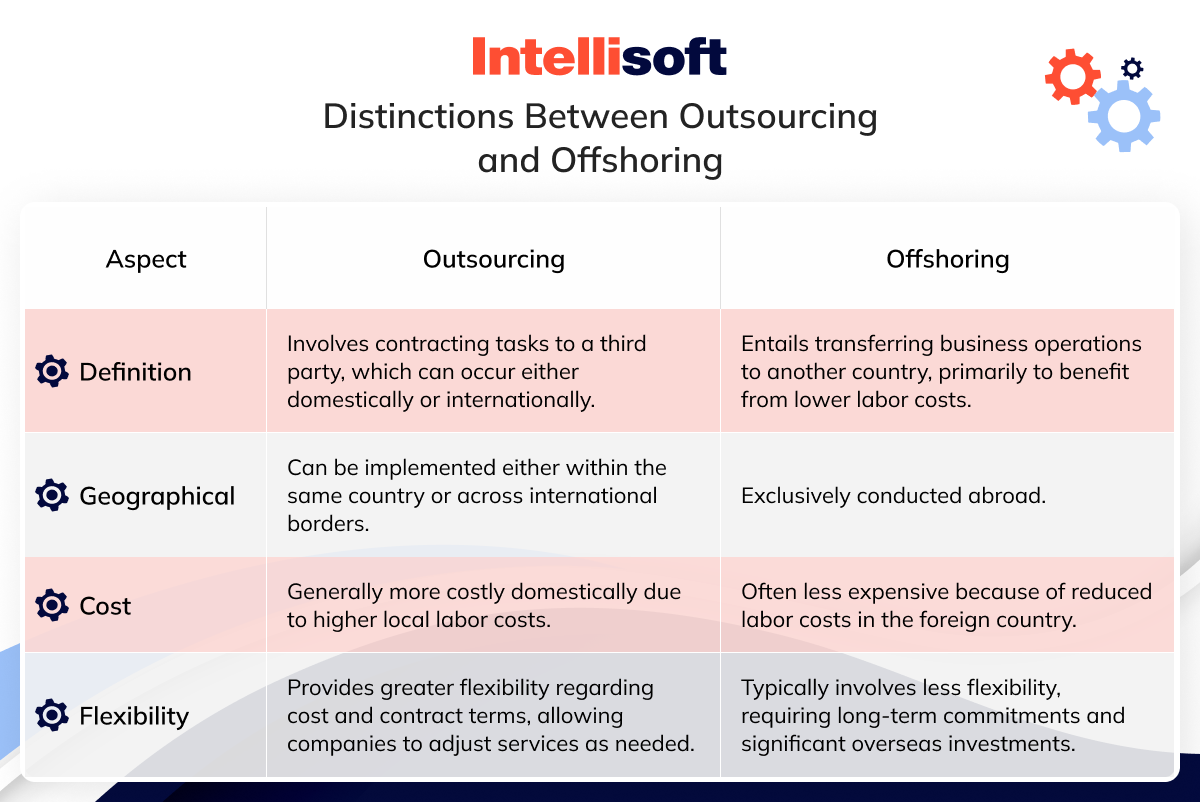
Related Articles:
- Nearshoring vs. Offshoring vs. Onshoring. Any Difference for IT?
- Pros and Cons of IT Offshoring: Benefits, Risks, and Limitations
- Five Things To Look For In An Ideal IT Offshoring Destination
- Offshore Software Development Company: Countries and Rates
- Nearshoring. What is it and for Who?
When to Use Software Outsourcing?
Now that we have learned the outsourcing vs offshoring definition let’s review the benefits of each approach in more detail. Software outsourcing offers various advantages for businesses, especially under certain conditions:

Cost Savings
Outsourcing can significantly reduce operational and development costs for businesses. This approach provides access to global talent at more competitive rates than local or in-house options, ultimately leading to cost savings.
Resource Maximization
Outsourcing allows companies to allocate their internal resources to core business activities while entrusting software development to external experts. This allocation helps in maximizing efficiency and productivity within the organization.
Access to Expertise
Companies lacking specific technical expertise or requiring access to the latest technologies can benefit from outsourcing. By tapping into global experts, businesses can obtain high-quality solutions that their in-house teams may not be familiar with.
Scalability
For businesses that need to scale quickly operationally, outsourcing software development offers the flexibility to easily increase or decrease resources without the long-term commitments associated with hiring permanent staff.
Speed to Market
Outsourcing can expedite the development process, enabling businesses to bring their products to market more swiftly than relying solely on in-house development.
Innovation and Scaling
When prioritizing innovation, outsourcing can provide the crucial creative and technical boost necessary for businesses to keep up with market demands and technological advancements.
What Are Examples of Software Development Outsourcing?
Many well-known technology companies and projects have effectively employed software development outsourcing to improve their capacities, lower expenses, and accelerate their development processes. Here are a few notable offshoring vs outsourcing examples:
- WhatsApp. During its initial stages, the development of its application was outsourced to developers in Eastern Europe to minimize costs while launching the app.
- Alibaba. Utilized outsourcing in its early phases to manage various software development tasks.
- Slack. Outsourced its application’s design and initial development to expedite its market entry.
- Google. Has delegated various aspects of its operations, including software development, to enhance productivity and drive innovation.
- Currencycloud. This global payments platform outsourced parts of its software engineering to enrich its capabilities.
When to Use Software Development Offshoring?
There are several strategic advantages to offshoring software development:

- Cost Reduction. Offshoring allows companies to take advantage of lower labor costs in other countries, enabling them to reduce expenses while maintaining high-quality software development.
- Access to a Larger Talent Pool. Offshoring opens the door to a broader spectrum of talent, with some regions offering specialized skills or a higher concentration of tech talent in specific areas of technology. This approach can significantly benefit companies seeking specific expertise that may be scarce or costly domestically, instilling a sense of confidence in the potential for enhanced productivity and innovation.
- Around-the-Clock Productivity. Offshoring to countries in different time zones enables companies to achieve nearly continuous work cycles. This method can lead to quicker project timelines as work is handed off between teams across time zones, facilitating faster development and deployment.
- Scalability. Offshoring can provide the necessary infrastructure and resources more rapidly than domestic mobilization when a company needs to scale up its development capabilities quickly. This approach is especially useful for companies experiencing rapid growth or working on large projects requiring substantial manpower.
- Strategic Market Entry. Offshoring can be a powerful tool for strategic market entry. Establishing a software development operation in a target market can help companies better understand and integrate into that market, providing insights into local consumer behavior and business practices. This strategic approach can instill a sense of reassurance about the potential for successful expansion.
- Risk Mitigation. Offshoring can be part of a risk mitigation strategy, spreading out operations across multiple geographic locations to avoid reliance on a single market or regulatory environment.
What Are Real-world Examples of Companies that Use Software Development Offshoring?
Let’s look at some examples of businesses that benefit from software development offshoring.
Lyft
Lyft, a rising star in the ride-sharing landscape, burst onto the scene in 2012 and swiftly climbed the ranks to become a major player. This dynamic company sets itself apart with a laser focus on enhancing the customer experience and continuously innovating to stay ahead. In a strategic move to boost its technological prowess, Lyft inaugurated a software research and development center in Eastern Europe in 2021.
This tech hub has quickly grown to a dedicated team of 20, with plans to expand to 100 experts specializing in data mapping and service enhancements. Lyft’s commitment to innovation is not just sustaining its growth but pushing the boundaries of what’s possible in ride-sharing.
BigCommerce
Established in 2009, BigCommerce has carved its niche as a powerhouse in the e-commerce sector, helping countless businesses flourish online. The platform’s relentless pursuit of growth has seen it expand its team and enhance its offerings. To combat the shortage of tech talent in the U.S., BigCommerce launched an offshoring unit in Ukraine, which has seen remarkable success.
From setting up a new office in just a month to expanding its team to over 30 developers in half a year, BigCommerce is not just growing—it’s thriving. Positioned for further expansion, it continues to drive innovation and redefine the e-commerce landscape.
ThredUP
ThredUP, an innovative online resale platform, took a strategic leap by opening a software R&D office in Ukraine, tapping into the country’s rich pool of tech talent. This move has equipped ThredUp with a team that includes rare specialists in machine learning, Java programming, and .Net Warehouse development, alongside bolstering its payroll and accounting operations.
The payoff was substantial; a successful IPO in 2019 raised $68 million, securing ThredUP’s position as the world’s largest consignment store. With these advancements, ThredUP is set to reshape the future of the clothing industry.
How to Choose Between Offshoring vs. Outsourcing in Terms of Software Development
Assessing your business requirements, financial considerations, and strategic objectives is vital when deciding between offshoring vs outsourcing for software development. Several key factors should be taken into account when making this determination:
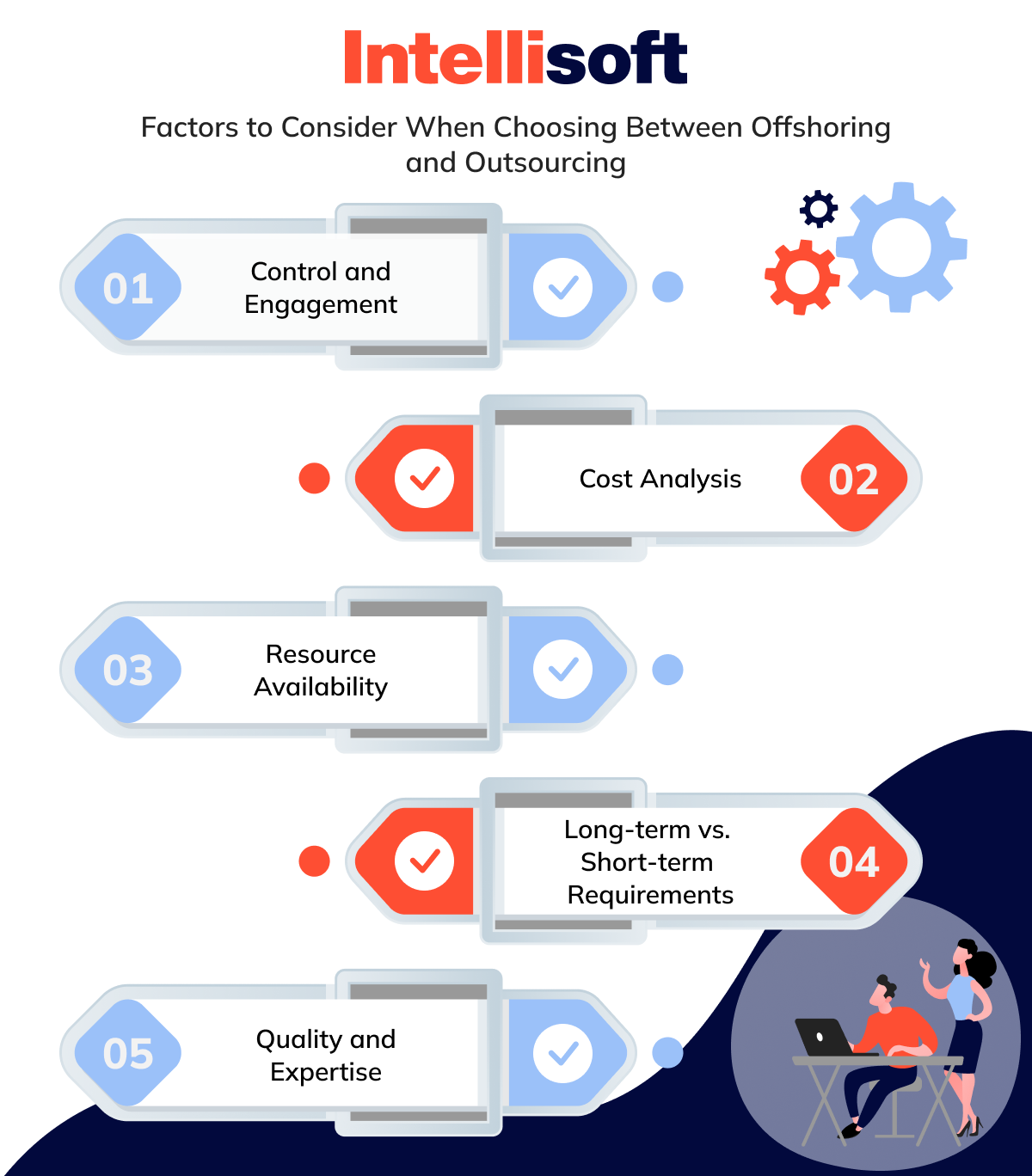
- Control and Engagement. Outsourcing may be the best option if closely managing the development process and having direct involvement is crucial. It often facilitates frequent communication and swift coordination between teams.
- Cost Analysis. Offshoring might be the preferred route if reducing costs is a top priority. Offshoring to countries with lower labor expenses can lead to significant cost savings compared to local outsourcing or engaging providers in higher-cost regions.
- Resource Availability. Assess whether you have the essential resources to oversee an offshore team, which could involve managing time zone disparities and cultural differences. If not, local or nearby outsourcing can help alleviate these challenges.
- Long-term vs. Short-term Requirements. Determine if your software development needs are short-term or project-specific, as this might be more suited to outsourcing. Offshoring may be more beneficial for long-term engagements requiring ongoing development and support.
- Quality and Expertise. Evaluate the expertise and quality of potential providers. Offshoring might offer access to a broader talent pool, while local outsourcing could offer higher quality assurance and simplified vetting processes.
When Should You Consider Outsourcing?
Outsourcing could be your secret weapon if you’re aiming for a speedy launch, grappling with limited technical know-how, or working within a tight budget. This approach isn’t just about handing off tasks—it’s about flexibility. You can delegate anything from specific features to the entire development process.
Plug the Resource Gap
Picture this; an entrepreneur is racing against the clock to launch a web application in four months. But there’s a snag—his two React Native developers are tied up with post-release duties and can’t take on the new app. By partnering with a development company, he can speed up the project and ensure a high-quality delivery without missing a beat.
Tackle Non-Core Challenges Efficiently
Imagine your startup is stacked with HTML/CSS talent, but suddenly, you need a mobile app. Outsourcing allows you to hand this task over to experts in mobile development, freeing up your core team to focus on what they do best. This shift not only saves time but also keeps your team aligned with their primary roles.
Secure Funding with a Showcase
Using outsourcing to craft your product’s first iteration (the MVP) and launching it to the market can dramatically increase your startup’s appeal to investors. Business angels and venture capitalists are more inclined to invest when they see a functional application rather than just an idea on paper. This initial funding boost is crucial for enhancing your product, ironing out any kinks, and adding necessary features.
When Should You Consider Offshoring?
Opting for an offshoring model can be highly beneficial when embarking on a long-term project that requires top-notch development work. Bringing on board an offshore development company to create the software you need allows your in-house team to concentrate on core activities without spreading themselves thin across various tasks.
A well-executed offshore strategy can enable companies to extend their business operations globally. For instance, consider customer support. By establishing a headquarters in the United States and multiple support offices in key regions, your company can overcome communication challenges stemming from language or cultural differences.
Furthermore, a mixed development model allows for seamless collaboration between internal and remote teams, as in the case of tech giants like Apple, Microsoft, Google, and IBM. With two teams working eight hours a day, productivity doubles, resulting in a much quicker time to market for your product.
Offshoring vs. Outsourcing with IntelliSoft
At IntelliSoft, we transform your visionary ideas into tangible products. Renowned as a global leader in software development, we provide a full spectrum of services, including bespoke software creation, dynamic web and mobile applications, and innovative growth marketing solutions.
Our team is a powerhouse of seasoned professionals, each an expert in their respective fields, from Healthcare to MarTech. We’re committed to upholding the highest standards complying with stringent industry regulations such as HIPAA, HL7/FHIR, and GDPR. Our expertise is further validated by multiple ISO certifications and Microsoft partnership recognitions, ensuring that every product we craft is not only compliant but secure.
Proudly serving clients and partners for more than 15 years, our reputation for excellence is backed by numerous awards for outstanding service and superior quality products.
Ready to bring your project to life? Contact us today, and let’s explore how we can turn your ideas into reality.





